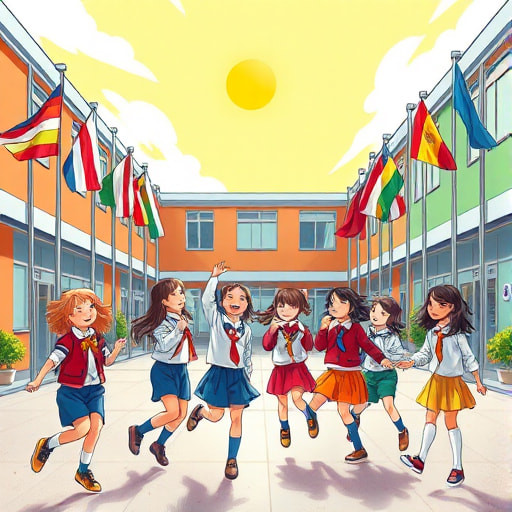Belize's Educational Odyssey: From Colonial Roots to a Bright Future
Once upon a time, nestled on the eastern coast of Central America, the small yet vibrant country of Belize embarked on a unique educational journey. This narrative explores the rich tapestry of Belize's educational history, highlighting the challenges, triumphs, and transformations that have shaped the nation's educational landscape.
In the early days, Belize, then known as British Honduras, had a rudimentary education system heavily influenced by its colonial rulers. The British established the first schools in the early 19th century, primarily managed by religious organizations. These schools focused on basic literacy and arithmetic, aiming to instill Christian values among the local population. Education was a privilege reserved mostly for the children of European settlers and the elite Creole community.
As the 20th century dawned, the winds of change began to blow through Belize. Local leaders and communities started advocating for more inclusive educational opportunities. The establishment of the Belizean Teachers’ Union in 1939 marked a pivotal moment, as educators rallied for better conditions and greater representation. By 1944, the British government introduced the Education Ordinance, which aimed to expand access to primary education and set standards for schools.
By the mid-20th century, Belize saw a shift towards a more nationalistic approach to education. The government began to assume a greater role in education, establishing public schools and expanding access to a broader segment of the population. In the 1960s, the introduction of technical and vocational training aimed to equip Belizeans with practical skills to support the growing economy.
Belize gained independence from British rule on September 21, 1981, ushering in a new era of educational reform. The newly formed government prioritized education as a cornerstone of national development. Efforts were made to increase enrollment rates, improve infrastructure, and diversify the curriculum to reflect Belize's multicultural heritage.
The introduction of free primary education in 1981 was a significant milestone, ensuring that children from all backgrounds had the opportunity to attend school. Secondary education also expanded in the 1990s, with the establishment of new high schools across the country.
Despite significant progress, Belize faced challenges in its quest to provide quality education for all. Geographic isolation, limited resources, and socio-economic disparities posed obstacles to equal access. However, Belizeans demonstrated resilience and innovation in addressing these issues.
Today, Belize's education system is a vibrant mosaic reflecting the country's rich cultural diversity. Schools celebrate the nation's multicultural heritage, incorporating Garifuna, Mayan, Mestizo, Creole, and other cultural influences into the curriculum. Bilingual education programs have been introduced, recognizing the importance of preserving indigenous languages while promoting English proficiency.
As Belize continues to evolve, the focus remains on creating an education system that is inclusive, equitable, and responsive to the changing needs of society. Embracing new educational technologies, fostering critical thinking, and promoting lifelong learning are at the forefront of Belize's educational vision.
In this unfolding narrative, Belize stands as a testament to the transformative power of education—a journey from colonial legacies to a future filled with promise and potential. The story of Belize’s educational history is not just about the past; it is a story of hope, resilience, and determination, inspiring generations to come.

The End

What is Scarlett Panda?
We use AI to create magical, personalized stories for your kids in seconds.
- Starring them, their friends, and even their favourite toys.
- Explore any topic, from dinosaurs to detectives.
- Ready in seconds, perfect for bedtime.
